Why OpenAI API Login Fails
Before we dive into fixes, let‘s first understand why you may be unable to login to OpenAI API in the first place:
- You entered incorrect login credentials – wrong username or password
- Your OpenAI account is not verified via email yet
- OpenAI blocked login from the VPN server you are on
- Browser extensions like adblock are interfering with login
- Browser cookies or cache got outdated, blocking access
- Too much traffic is hitting OpenAI servers
- The API service itself is down for maintenance
- Your API key got banned due to usage policy violation
- A bug in your client code is causing a login loop
These are some of the top reasons for OpenAI API login failures. The good news is that the solutions are straightforward once you identify the root cause.
Why OpenAI API Is Not Available In Your Country In 2024?
If you are in one of those countries excluded from the OpenAI API available countries list then you will see this error. The reason you can’t access OpenAI API in your country is that the OpenAIs service are not available in your country till now.
When you are in a region where OpenAI API is not supported, you can’t use OpenAI API in your country. It is also possible that OpenAI API might have restricted your IP address from accessing it due to any previous rule violations.
If there is any kind of ban imposed on your country for using OpenAI API then you will not be able to start OpenAI API in your country. That’s why if you are not in OpenAI supported countries, you will not be able to access OpenAI API.
What Causes OpenAI API Login Errors?
Now that we have covered the key login fixes, let‘s explore the root causes of the errors:
Incorrect Credentials
The most common reason for login failures is incorrect API keys or account passwords.
Always double check you are using the right secret keys and password associated with the account you are trying to access.
Unverified Account
Be sure to click the confirmation link sent to your inbox to verify accounts before attempting to login. Check spam folders too.
Banned API Keys
Breaching the OpenAI API terms of service in any way can result in your account‘s API keys getting permanently banned.
Avoid actions that may be flagged abusive so your accounts remain in good standing.
VPN Usage
Due to risks of API abuse, OpenAI systematically blocks access from many VPN server IP addresses.
It is best to avoid routing OpenAI API traffic through VPNs to prevent random login failures.
Browser Extensions
Extensions like ad blockers, privacy tools, etc can modify page access in ways that break intended login flows.
Disable extensions selectively or use incognito windows to isolate OpenAI API authentication from modification.
Stale Browser Cache
Outdated cached site assets can cause unexpected failures in site logins.
Always clear browser cache/cookies before attempting to troubleshoot API login issues.
High Traffic
During periods of heavy load, OpenAI servers may fail to authenticate some login attempts.
Retry logging in after a minute when traffic has eased up to successfully get through.
API Downtime
Even robust cloud platforms can suffer occasional service outages.
If the OpenAI status page reports an ongoing issue, API logins will fail until it is resolved.
Client-side Bugs
Problems in your own code interacting with the API could also prevent smooth logins.
Review code thoroughly for defects that may be redirecting logins into a loop instead of authorizing.
Design & build
- 2.1.2 channels
- With a pair of True X1 speakers: 4.1.2
- Dolby Atmos, Dolby TrueHD, Dolby Digital
- HDMI eARC interface
The Yamaha True X Bar 50A measures 40 x 2.5 x 4.4 inches (WxHxD) and weighs just 8.5 pounds. The included subwoofer measures 7.4 x 16.1 x 16 inches (WxHxD) and weighs 20.7 pounds, all of which makes for a relatively compact soundbar system.
Yamaha includes power cords for the soundbar and subwoofer, a digital optical cable, and a Quick Start guide, plus two spacers and a paper mounting template if you’re planning to hang the soundbar on a wall.
The True X Bar 50A is a 2.1.2-channel system, which includes two left/right front racetrack speakers, each with a 1.75 × 2.6-inch cone, 2 left/right upfiring height speakers with 2-inch cones, and a pair of built-in subwoofers with 3-inch cones. Each of the six speakers is 30W. The standalone subwoofer has a 6.25-inch cone and puts out 100W.
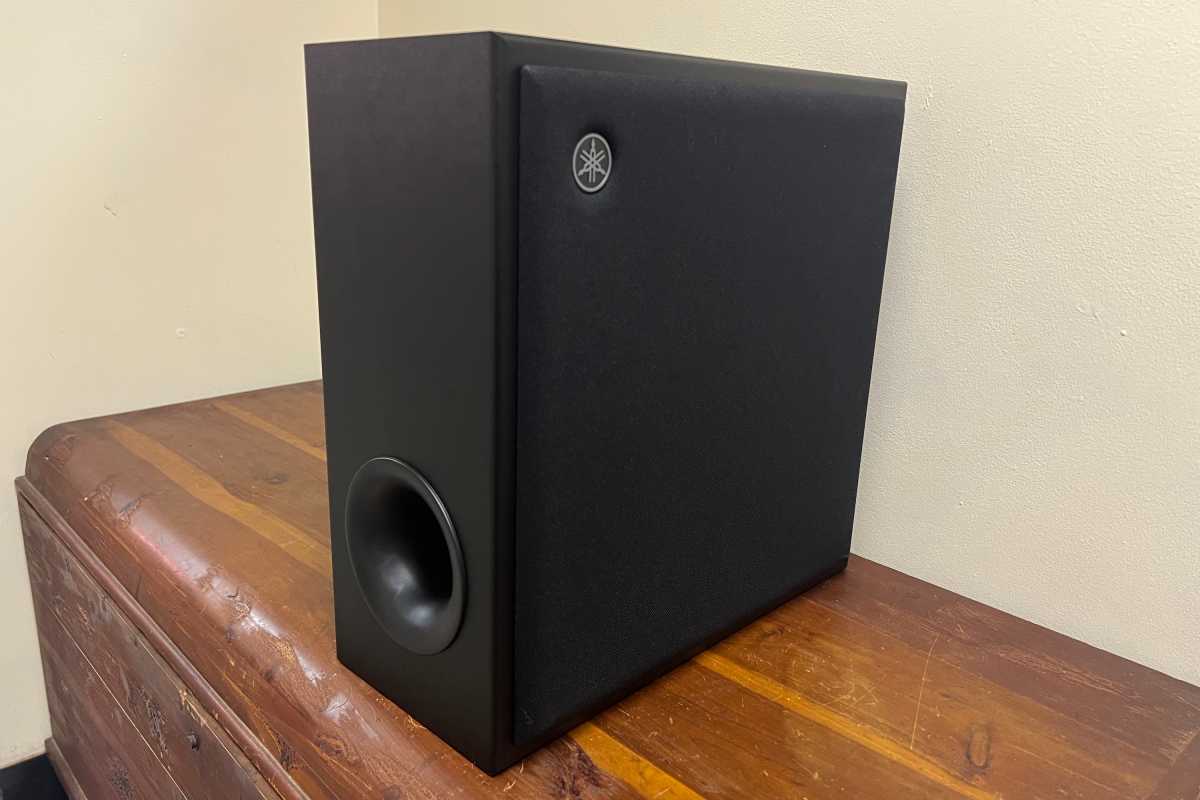
The Yamaha True X Bar 50a comes with a subwoofer.
James Barber/Foundry
Subwoofer aficionados will notice that there’s no center channel speaker in this setup. Yamaha’s signal processing does an excellent job of keeping dialog in the center of the sound field, especially when the Clear Voice function is engaged.
The soundbar has one HDMI eARC port, an additional HDMI input (good for connecting a video source directly to the unit), and one digital optical input, along with an ethernet port. The unit supports Dolby Atmos, Dolby TrueHD, and Dolby Digital.
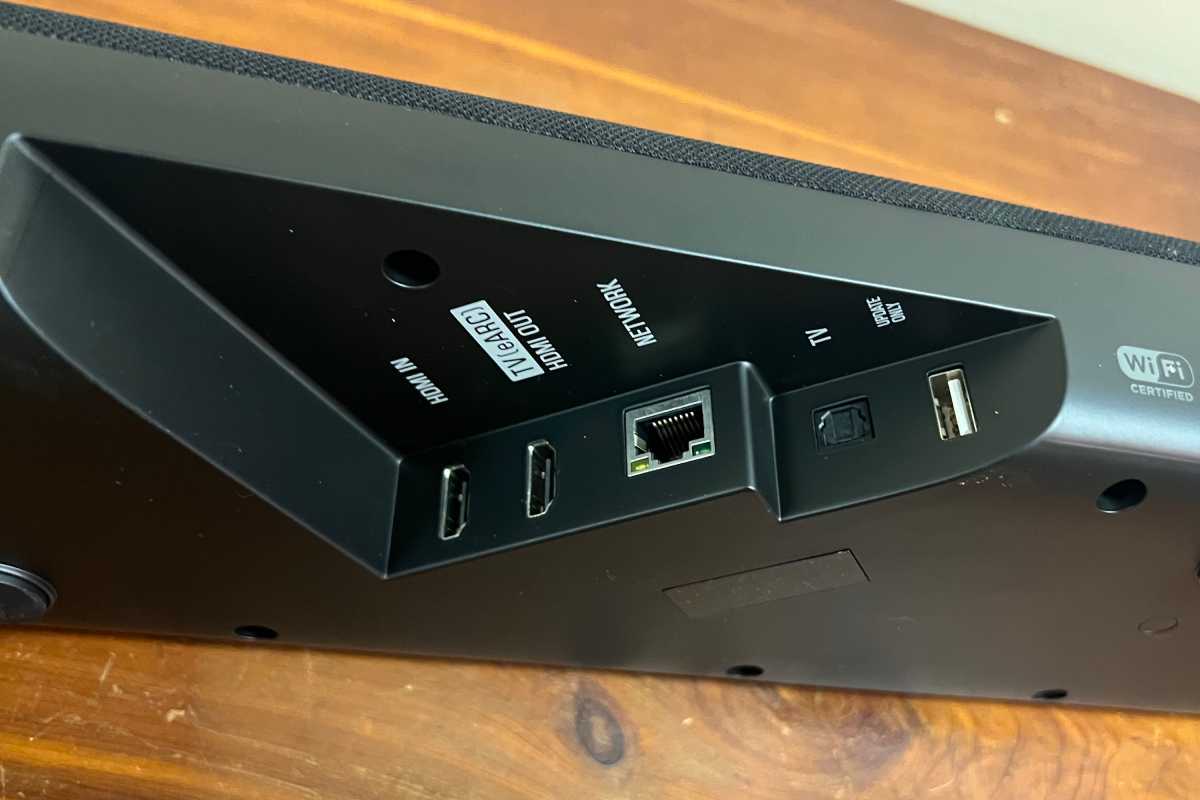
The Yamaha True X Bar 50A has an HDMI-eARC port and an additional HDMI input; also notice the ethernet port.
James Barber/Foundry
Best Practices for OpenAI API Access
Here are some tips to avoid OpenAI API login and usage issues proactively:
-
Use correct keys – Never misuse or share API keys across accounts. Use keys belonging to a specific account.
-
Enable 2FA – Two-factor authentication adds an extra layer of security for your OpenAI account.
-
Handle errors gracefully – Catch errors such as failed logins in code and retry smoothly.
-
Follow usage policies – Stay compliant with OpenAI‘s API guidelines to avoid account suspensions.
-
Avoid VPNs – Do not access OpenAI API via VPN networks or IPs to prevent blocks.
-
Minimize extensions – Reduce browser extensions when working with OpenAI API.
-
Clear cookies – Wipe browser cookies frequently to avoid conflicts for access.
-
Use API keys – Rely on API keys over account logins whenever feasible.
-
Retry if issues – Check status page and retry failed requests if temporary service disruptions.
-
Isolate accounts – Create developer accounts separate from collaborator accounts.
Adopting these best practices will help avoid the majority of login and access reliability issues faced.
Why is OpenAI API Not available is not available in some countries?
Due to legal and regulatory restrictions that ban the export or use of specific technology or services, the OpenAI API may not be available in some countries. Due to the legal and regulatory limitations that forbid the export or use of specific technology or services, OpenAI API may not be accessible in some nations. In addition, OpenAI is based in the United States and must follow US export control laws and regulations.
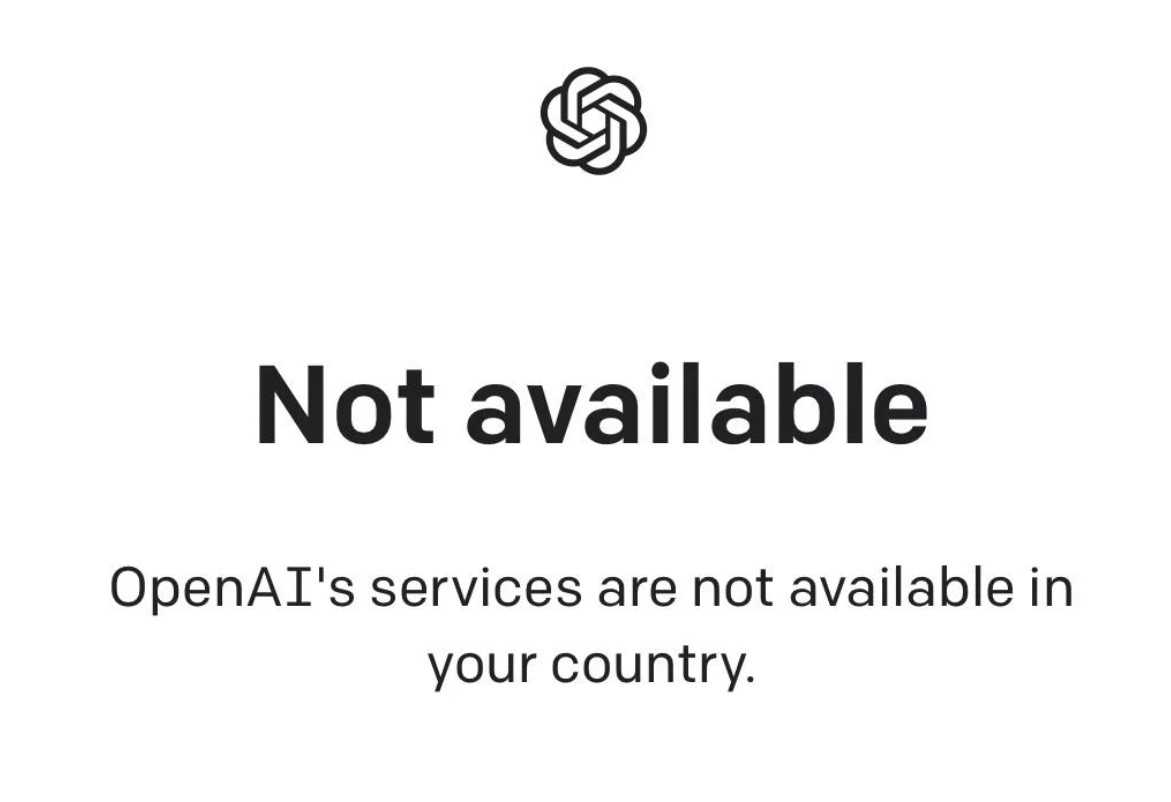
These rules, which restrict exports to nations subject to US sanctions, bans, or other trade restrictions, are handled by the US Department of Commerce’s Bureau of Industry and Security (BIS).
OpenAI may be forced to restrict access to its API in certain countries to keep up with these restrictions.
Build & facilities
Yamaha True X System specifications
(Image credit: Yamaha Music Australia/JF)
SR-X50A SOUNDBAR
Drivers: 46×66mm × 2, 75mm x 2, height 52mm × 2
Bar inputs: HDMI, HDMI ARC, optical, USB-A (update only), Ethernet/Wi-Fi, AirPlay, Bluetooth (SBC, AAC)
Bar dimensions: 1015 × 63 × 112mm
Bar weight: 3.9kg
WIRELESS SUBWOOFER
Subwoofer driver: 160mm cone
Subwoofer dimensions: 187 × 407 × 409mm
Subwoofer weight: 9.4kg
WS-X1A WIRELESS SPEAKERS (two included)
Drivers: 55mm x 1, passive radiator x 2
Dust/water rating: IP67
Power: battery, USB Type C, charging cradle
Dimensions: 88 × 105 × 88mm
Weight: 0.5kg
The 101cm-long SR-X50A soundbar gets its nice curved edges from a fabric wrap (black or carbon grey) which covers front and top, even out to the ends, down into their side ports. Under the top surface hides a pair of upward-firing drivers ready to deliver the height component of Dolby Atmos soundtracks, together with forward-firing stereo channels each with a full-range racetrack-shaped 46×66mm driver supported by a three-inch woofer.
All that is further supported by the wireless subwoofer’s 160mm (6.25-inch) driver, which Yamaha says will deliver down to 35Hz, for the truly deep movie-style stuff.
Inputs are straightforward: just power, Ethernet (or Wi-Fi) to network the bar, a USB-A socket for updates only (these come over the internet anyway), and then two HDMI sockets. One of these connects to the ARC/eARC-equipped HDMI input on your TV, to play audio from the TV back to the bar, and to forward video from the second straightforward input, which we’d recommend for whatever source delivers best Atmos, be it a Blu-ray player or media player (we used an AppleTV 4K). You should get Atmos through from connected devices via your TV’s eARC, but nothing’s guaranteed with ARC, so that a direct connection will be more reliable.
Finally there’s an optical in, in case your TV doesn’t support ARC at all, or decides to prove incompatible.
This True X system is not part of Yamaha’s MusicCast series, although the bar does network, and you can use Yamaha’s ‘Sound Bar Controller’ app to access various settings. All of these are covered by the half-size slightly-fat remote, but the app gives better feedback on what you’ve selected, compared with just lights on the bar which you’ll have to learn. There are various sound modes and a ‘Clear Voice’ function to tweak the performance for different content types and usage scenarios.
The bar can also be used for music, with the app offering streaming services including Spotify Connect, Tidal Connect and Amazon Music; Apple users can stream any music to the system via AirPlay 2. Bluetooth (SBC and AAC codecs only) is also onboard.
A built-in microphone in the soundbar also enables direct voice control with the Amazon Alexa voice assistant app.
There’s a significant saving in the package. Comparing Australian prices, you could buy the bar and subwoofer alone for AU$1299, but the X-factor in Yamaha’s True X system really comes from those two little WS-X1A wireless speakers. These are priced at AU$229 each if bought separately, and you get two of them in the True X system at AU$1599.
Verdict
Yamaha’s True X package does an excellent job, led by the clarity of the soundbar, supported by the attractive subwoofer, and expanded with the versatile little wireless rears.
It is not without high-quality competitors from the likes of JBL and Samsung, but Yamaha both holds its own against the best of these, and undercuts them in price. The system’s ease of use and set-up, together with reliably strong and easily adjusted performance, puts it straight into our top list of soundbar recommendations.
See all our Australian reviews from Australian Hi-fi & Sound+Image magazines
Latest news on the Australian Hi-fi Show
Retrieving An OpenAI API Key
To obtain an API key for the OpenAI API, you will need to sign up for a free OpenAI account on the OpenAI website (https://openai.com/):

To sign up for an account, click the «Sign Up» button in the top right corner of the homepage, and then follow the prompts to create a new account. Once you have created an account, you can obtain an API key by visiting the «API» section of your account settings.
In the «API» section, you will find a button labeled «Generate API Key». Click this button to generate a new API key, which you can then use to make requests to the OpenAI API from your web application. Be sure to keep your API key secure and do not share it with anyone else.
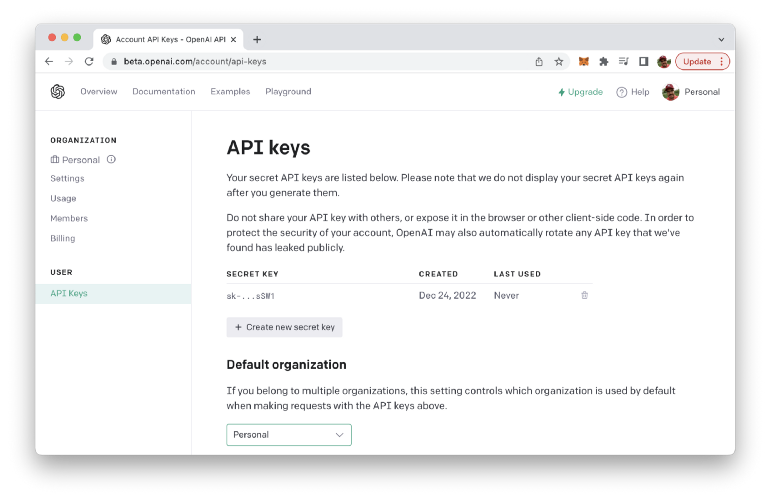
List of Countries where OpenAI is Available
- Antigua and Barbuda
- Argentina
- Armenia
- Australia
- Austria
- Bahamas
- Bangladesh
- Barbados
- Belgium
- Belize
- Benin
- Bhutan
- Bolivia
- Bosnia and Herzegovina
- Botswana
- Brazil
- Brunei
- Bulgaria
- Burkina Faso
- Cabo Verde
- Canada
- Chile
- Colombia
- Comoros
- Congo (Congo-Brazzaville)
- Costa Rica
- Côte d’Ivoire
- Croatia
- Cyprus
- Czechia (Czech Republic)
- Denmark
- Djibouti
- Dominica
- Dominican Republic
- Ecuador
- El Salvador
- Estonia
- Fiji
- Finland
- France
- Gabon
- Gambia
- Georgia
- Germany
- Ghana
- Greece
- Grenada
- Guatemala
- Guinea
- Guinea-Bissau
- Guyana
- Haiti
- Holy See (Vatican City)
- Honduras
- Hungary
- Iceland
- India
- Indonesia
- Iraq
- Ireland
- Israel
- Italy
- Jamaica
- Japan
- Jordan
- Kazakhstan
- Kenya
- Kiribati
- Kuwait
- Kyrgyzstan
- Latvia
- Lebanon
- Lesotho
- Liberia
- Liechtenstein
- Lithuania
- Luxembourg
- Madagascar
- Malawi
- Malaysia
- Maldives
- Mali
- Malta
- Marshall Islands
- Mauritania
- Mauritius
- Mexico
- Micronesia
- Moldova
- Monaco
- Mongolia
- Montenegro
- Morocco
- Mozambique
- Myanmar
- Namibia
- Nauru
- Nepal
- Netherlands
- New Zealand
- Nicaragua
- Niger
- Nigeria
- North Macedonia
- Norway
- Oman
- Pakistan
- Palau
- Palestine
- Panama
- Papua New Guinea
- Peru
- Philippines
- Poland
- Portugal
- Qatar
- Romania
- Rwanda
- Saint Kitts and Nevis
- Saint Lucia
- Saint Vincent and the Grenadines
- Samoa
- San Marino
- Sao Tome and Principe
- Senegal
- Serbia
- Seychelles
- Sierra Leone
- Singapore
- Slovakia
- Slovenia
- Solomon Islands
- South Africa
- South Korea
- Spain
- Sri Lanka
- Suriname
- Sweden
- Switzerland
- Taiwan
- Tanzania
- Thailand
- Timor-Leste (East Timor)
- Togo
- Tonga
- Trinidad and Tobago
- Tunisia
- Turkey
- Tuvalu
- Uganda
- United Arab Emirates
- United Kingdom
- United States of America
- Uruguay
- Vanuatu
- Zambia
Conclusion
In conclusion, if you see the error message “OpenAI API is not available in your country,” it means that OpenAI’s API service is not currently available in your location due to legal or regulatory limitations. While there is no simple solution to this problem, you can try using a VPN or proxy server to access the API from a server in another region.
These approaches, however, may violate OpenAI’s terms of service, so use them at your own risk. It is also worthwhile to try contacting OpenAI support for additional information and possible solutions.
Yamaha SR-X50A review: Design & Usability
(Image credit: Future)
A company as pragmatic and level-headed as Yamaha is never going to get carried away where the design of its soundbars and/or subwoofers is concerned — and so the SR-X50A looks exactly as you’d expect. And it’s built and finished to the sort of standard you’d expect of Yamaha, too.
Each element of the ‘True X’ range is available in one of three finishes: black, carbon grey or light grey. The soundbar is a purposeful-yet-tidy 63 x 1015 x 112mm (HxWxD) — which makes it a very nice match, in terms of width, for one of the best 48in TVs, but won’t look underpowered beneath anything up to, say, 75in.
The subwoofer, meanwhile, is an equally manageable 407 x 187 x 409mm (HxWxD) — and, of course, the nature of its connectivity means you can position it pretty much anywhere it has access to mains power and remains within wireless range of the soundbar. Its forward-facing reflex port makes it a little more relaxed about positioning than it otherwise would be, too.
The acoustic cloth that covers the majority of the soundbar and the subwoofer’s driver looks and feels good, and is applied flawlessly. The rest of the subwoofer is fairly prosaic vinyl-wrapped MDF, but let’s be honest: you’re unlikely to want or need to touch it once you’ve got it positioned. The overall quality of finish is easily appropriate for the asking price, and Yamaha’s decision to use a sort of bronze/copper colour both for the soundbar’s physical controls and the discreet branding is a good one. The same colour is used for the labelling above the little row of lights that indicate exactly what the system is up to.
(Image credit: Future)
Those physical controls run to ‘power on/off’, ‘input selection’, ‘volume up/down’ and an ‘action’ button that sees most of its action when you’re initially setting up the soundbar’s Wi-Fi connection. There’s also a ‘mute’ button for the integrated mics, in case you don’t want to take advantage of the built-in Amazon Alexa voice assistance. The subwoofer, meanwhile, arrives pre-paired to its partnering soundbar if you buy the SR-X50A package — if you buy the SR-X40A soundbar by itself and then decide to add the SR-X100A subwoofer at a later date, there’s a little ‘setup’ button on the sub to facilitate pairing.
Control — up to a point — is available via the Yamaha Sound Bar Controller app that’s free for iOS and Android. It’s useful for accessing your Spotify, Tidal and QQ Music accounts, controlling volume and balancing subwoofer output against soundbar output, and selecting your sound mode (choose from ‘stereo’, ‘standard’, ‘movie’ or ‘game’). You can also switch the ‘bass extension’ and ‘clear voice’ options on or off. In truth it’s not the most logical app around, and not especially exciting to look at — but it’s got what you need, and that’s what’s most important.
All of these functions are duplicated on the system’s remote control handset. It’s made of hard, cheap-feeling plastic, goes without backlighting and could be more logically laid out — but it’s functional. It’s not unlike the control app inasmuch as it’s got everything you need, yet you’ve seen it done better.
What is OpenAI API?
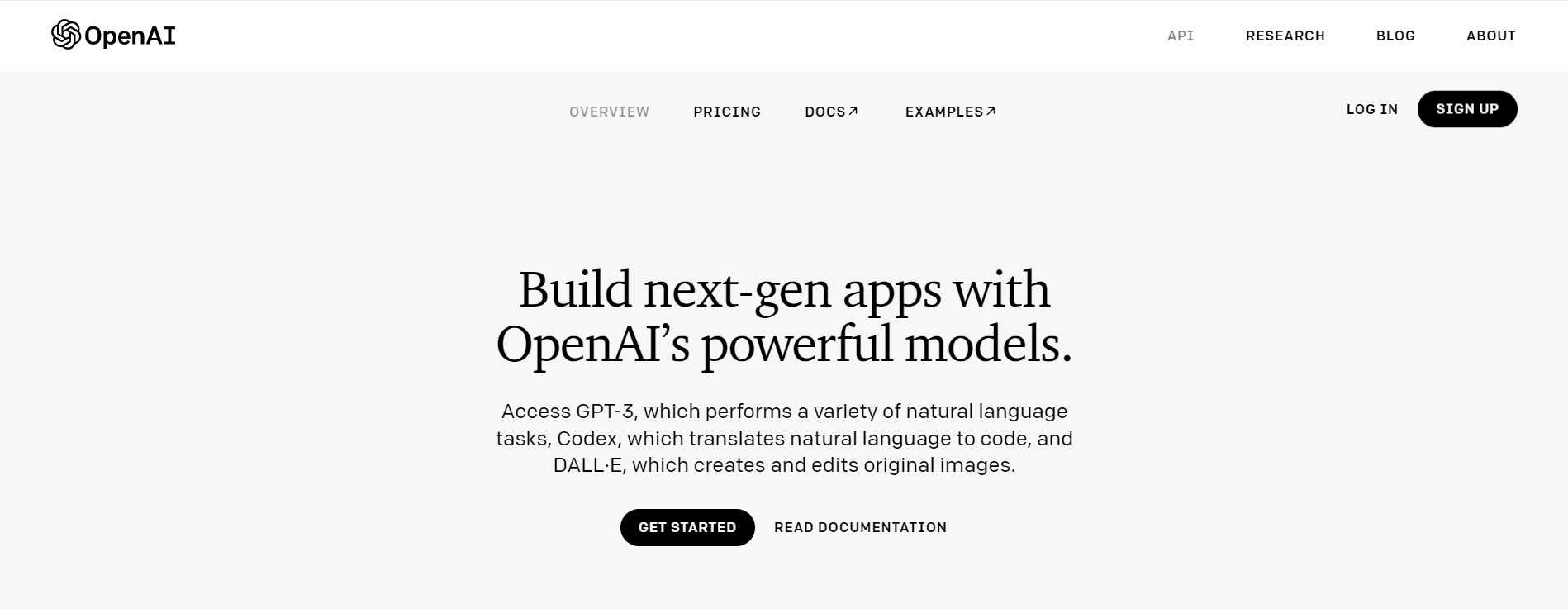
OpenAI API is a cloud-based artificial intelligence service given by OpenAI. It is a leading research group dedicated to developing advanced artificial intelligence.
The API gives developers access to cutting-edge AI models that may be used in various applications such as natural language processing, computer vision, etc. These models can be utilized for multiple tasks, including language processing, image processing, and decision-making. The platform also contains tools for fine-tuning the models to meet certain use cases better, making it an effective tool for developers of various levels of experience.
Overall, OpenAI API is a powerful platform that allows developers to easily add advanced AI features to their apps without creating and building models from scratch.
Countries Where OpenAI’s Services are Available
- Estonia
- Fiji
- Finland
- France
- Gabon
- Gambia
- Georgia
- Germany
- Ghana
- Greece
- Grenada
- Guatemala
- Guinea
- Guinea-Bissau
- Guyana
- Haiti
- Holy See (Vatican City)
- Honduras
- Hungary
- Iceland
- India
- Indonesia
- Iraq
- Ireland
- Israel
- Italy
- Jamaica
- Japan
- Jordan
- Kazakhstan
- Kenya
- Kiribati
- Kuwait
- Kyrgyzstan
- Latvia
- Lebanon
- Lesotho
- Liberia
- Liechtenstein
- Lithuania
- Luxembourg
- Madagascar
- Malawi
- Malaysia
- Maldives
- Mali
- Antigua and Barbuda
- Argentina
- Armenia
- Australia
- Austria
- Bahamas
- Bangladesh
- Barbados
- Belgium
- Belize
- Benin
- Bhutan
- Bolivia
- Bosnia and Herzegovina
- Botswana
- Brazil
- Brunei
- Bulgaria
- Burkina Faso
- Cabo Verde
- Canada
- Chile
- Colombia
- Comoros
- Congo (Congo-Brazzaville)
- Costa Rica
- Côte d’Ivoire
- Croatia
- Cyprus
- Czechia (Czech Republic)
- Denmark
- Djibouti
- Dominica
- Dominican Republic
- Ecuador
- El Salvador
- Malta
- Marshall Islands
- Mauritania
- Mauritius
- Mexico
- Micronesia
- Moldova
- Monaco
- Mongolia
- Montenegro
- Morocco
- Mozambique
- Myanmar
- Namibia
- Nauru
- Philippines
- Poland
- Portugal
- Qatar
- Romania
- Rwanda
- Saint Kitts and Nevis
- Saint Lucia
- Saint Vincent and the Grenadines
- Samoa
- San Marino
- Sao Tome and Principe
- Senegal
- Serbia
- Seychelles
- Sierra Leone
- Singapore
- Slovakia
- Slovenia
- Solomon Islands
- South Africa
- South Korea
- Spain
- Sri Lanka
- Suriname
- Sweden
- Switzerland
- Taiwan
- Tanzania
- Thailand
- Timor-Leste (East Timor)
- Togo
- Tonga
- Trinidad and Tobago
- Tunisia
- Turkey
- Tuvalu
- Uganda
- United Arab Emirates
- United Kingdom
- United States of America
- Uruguay
- Vanuatu
- Zambia
- Nepal
- Netherlands
- New Zealand
- Nicaragua
- Niger
- Nigeria
- North Macedonia
- Norway
- Oman
- Pakistan
- Palau
- Palestine
- Panama
- Papua New Guinea
- Peru
Read More:- Best ChatGPT Apps
Read More:- Best Google BARD AI Alternatives
Going solo…
We took one of the little speakers away, switched it to ‘Solo’ and fed it Bluetooth from an iPad Pro. You are more aware of their size once they are alone, and there’s no cheating physics – there’s nothing here below 70Hz – but just enough support for a wide range of pleasant listening. Once we got one in a supportive corner, it made a nice job of Gary Moore’s Midnight Blues, the bassline surprisingly supported even when it dropped a full octave; the whole was just slightly spitty, but overall there was a remarkable spaciousness from what is, after all, a mono speaker. Mono is much underestimated, of course. Some songs should only be played this way.
Once off in their own Bluetooth world, the 1As disappear from the Sound Bar app; they become entirely local. Pricing presumably precluded True X linking everything up with MusicCast, Yamaha’s streaming and multiroom platform. But Yamaha has trademarked ‘True X’ to also cover AV receivers and amplifiers, plus their software and remote controls, so will the two worlds at some point interact? It seems a shame you could have a mix of Yamaha units at home, some of which can talk to each other, while others can’t.
(Image credit: Yamaha Music Australia/JF)
True X Speaker 1A wireless speakers
- Double as portable Bluetooth speakers
- Compact design
- Waterproof
Yamaha has made it easy to create an immersive surround experience with a pair of its optional True X Speaker X1A wireless speakers, each of which can double as a high-quality portable Bluetooth speaker.
It might be more accurate to describe them as Bluetooth speakers that can double as surround for the True X Bar 50A. The speakers are tiny, measuring 7.3 x 2.7 x 2.5 inches (HxWxD) and weighing just 1.3 pounds. A full charge takes 3 hours and delivers 12 hours of battery life.
Each X1A speaker has a single 2.1-inch full-range driver and two passive radiators. The speakers have an IP67 rating, which means they’re dustproof and waterproof for brief periods in up to a meter of water. A full charge takes 3 hours to give 12 hours of portable playback. They connect via Bluetooth 5.0 and support the SBC and AAC codecs.

The True X Speaker X1A wireless speakers pictured with a charging dock.
James Barber/Foundry
The True X Speaker 1A is a remarkably good Bluetooth speaker. There’s plenty of bass and lots of detail at higher volumes, with zero distortion at any reasonable volume for a speaker this size. The only downside is that two speakers can’t work as a stereo pair, an option that would make the 1A a truly compelling backup system.
The speakers can charge via USB-C, but Yamaha offers the $24.95 CC-T1A charging cradle to make a speaker more portable if you’re using it as surround with the True X Bar 50A. Just pick up the speaker and push the button that switches from Surround to Solo mode.
If you’re not planning to use the X1A as a portable speaker, you might want to skip the charging cradles and leave them plugged into the wall with your own USB-C charger. If you’re only using one X1A as a Bluetooth speaker, you’ll only need one charging cradle and can save $24.95 by skipping a second.
The X1A speakers paired easily with the True X Bar 50A, and they usually powered down when I turned off the soundbar. I went away for a few days during my testing, and the rear speakers weren’t putting out audio when I returned, but that issue was fixed by simply powering off each X1A and turning it back on.
The surround experience is superlative, especially when you factor in how small and easy to set up these speakers are. If you’re willing to run them on battery power after charging them on a tabletop, you can place each speaker anywhere behind you without worrying about wires.
Создание запроса
Создание запроса к OpenAI API можно выполнить с помощью метода . Этот метод принимает множество параметров, таких как ключ API, движок модели, текстовый промпт, максимальное количество токенов и т.д.
Пример запроса на TypeScript
- — это объект, предоставляемый библиотекой OpenAI, который содержит методы для взаимодействия с API OpenAI.
- — ключ API OpenAI, который нужно установить, чтобы использовать API.
- — переменная, которая хранит предыдущее сообщение и передается в запрос на генерацию ответа.
- — переменная, которая содержит результаты запроса на генерацию ответа.
- — указывает, какую модель GPT-3 использовать для генерации ответа.
- — текст, на основе которого будет сгенерирован ответ.
- — параметр, который определяет степень случайности в генерации ответа.
- — максимальное количество токенов (слов или символов) в ответе.
- — количество вариантов ответа, которые будут сгенерированы.
- — список слов или фраз, при наличии которых генерация ответа должна быть завершена.
Что такое значение ?
— это параметр, который определяет максимальное количество токенов (слов или символов), которые могут быть сгенерированы в ответ на запрос к OpenAI API. Этот параметр влияет на длину и содержание генерируемых ответов, поскольку он ограничивает количество слов, которые могут быть использованы для генерации ответа.
Конкретное значение зависит от ряда факторов, таких как желаемая длина генерируемого текста, задача, на которую нацелен запрос, и сложность контекста. Если вы хотите сгенерировать более краткий ответ, то можете установить на меньшее значение, например, от 50 до 200 токенов. Если же вы хотите получить более развернутый и подробный ответ, то можете установить на более высокое значение, например, от 300 до 2048 токенов.
Некоторые модели, такие как GPT-3 семейства «davinci», «curie» и «babbage», могут генерировать тексты до 2048 токенов. Однако, стоит отметить, что увеличение значения может привести к ухудшению качества и связности генерируемого текста, а также к увеличению времени, необходимого для генерации ответа.
Кроме того, для генерации кода с использованием модели GPT-3 «davinci-codex» рекомендуется использовать значение в диапазоне от 64 до 512 токенов. Это связано с тем, что генерация кода может быть более сложной задачей, чем генерация текста, и большое значение может привести к генерации неточного или некорректного кода.
В целом, выбор значения зависит от вашей конкретной задачи и требований к результатам, которые вы хотите получить
При выборе значения важно учитывать контекст задачи и ограничения модели, а также проводить тестирование и эксперименты для определения оптимального значения
Reasons Why Your Card is Getting Declined on OpenAi
Image taken from a reddit user
There can be various reasons due to which you card might be getting declined if you’re trying to purchase ChatGPT or other OpenAi’s products.
However, as the customer support of OpenAi is not responding, here’s our take on the reason.
Reason #1. Indian Banking Law
One of the major reasons why Indian residents are not able to purchase ChatGPT is due to a new banking law that came into effect in October 2021.
According to this law, Indian credit cards cannot be used for recurring payments without the e-mandate setting.
While this may be a security measure to prevent fraudulent transactions, it has caused problems for Indians trying to purchase subscriptions from international businesses, including Open AI.
Reason #2. Stripe Payment Error
Another reason for the card declined error could be due to an error in the payment gateway, specifically Stripe.
Stripe is a popular payment processor used by Open AI and many other businesses worldwide. However, due to various reasons like technical glitches or maintenance work, the payment gateway could be temporarily down, resulting in a failed transaction.
Reason #3. Unavailability of ChatGPT 4 in Certain Countries
Open AI may have restricted the sale of ChatGPT 4 in certain countries due to various reasons like legal requirements, licensing issues, or lack of demand.
If you try to buy ChatGPT 4 from one of these countries and get the error message “Card Declined,” it’s possible that Open AI hasn’t made it available for sale in your area.
If you want to buy ChatGPT 4, you should definitely turn off your VPN. Some people have said that when they did this, they were able to pay successfully.
Reason #4. Tax Calculation Problems
If you’re experiencing a “card declined” error while attempting to purchase ChatGPT, it’s possible that there might be a tax calculation problem.
There could be a discrepancy between the total amount being charged and the amount your financial institution expects.
When you make a purchase, the total amount usually includes the product’s cost, and any additional charges such as sales tax or VAT, depending on your location.
If there is an issue with the tax calculation, it might result in an incorrect total charge, causing your card to be declined.
To resolve this issue, follow these steps:
- Check your billing information: Make sure your billing address and other details are correct and up to date, as this information is used to calculate the applicable taxes.
- Verify the total charge: Ensure that the total amount, including taxes, matches what you expect to be charged. If you notice any discrepancies, contact the ChatGPT support team to clarify the issue.
Yamaha SR-X50A review: Performance
(Image credit: Future)
Let’s deal with the first thing first: the lack of a dedicated centre channel doesn’t seem to hold the Yamaha SXR-X40A soundbar back in the slightest. No matter if the scene is purely dialogue, or if it’s a verbal exchange in the midst of a colossal fire-fight, the Yamaha projects and defines voices with complete positivity. Speech is detailed and distinct, and it sits securely at the front of a well-defined and expansive soundstage.
As well as being capable of creating a convincing facsimile of a centre channel, those full-range racetrack drivers serve up impressive width too. The Yamaha can spread sound far beyond its physical limitations, and can keep them organised and convincingly positioned at the same time. And there’s sufficient bite and shine at the top of the frequency range to make you forget there are no dedicated tweeters in this soundbar, too: when that glass shatters or those bullet-casings tumble to the floor, the SR-X40A’s treble response is never less than persuasive.
(Image credit: Future)
The soundbar’s overall tonality when dealing with movie soundtracks is nicely neutral, and it keeps detail levels up at an impressive level. The handover to the subwoofer is achieved without alarms, and the sub itself controls low-frequency impacts well. The world isn’t short of subwoofers that just grumble along in a monotone, but this is not one of them — the SR-X100A is observant where the attack of bass sounds is concerned, and offers worthwhile variation in bass information should it be required.
Switching to music (in stereo) highlights the subwoofer’s facility with tone and momentum even more readily — but it also more readily exposes some of the shortcomings in the soundbar’s performance. There’s a slight, but undeniable, sensation of edginess and phasiness when midrange modulates into top end, a rather papery quality to treble sounds that makes this a less-than-ideal music speaker. Switch to some music mastered in Dolby Atmos and while there are quite obvious gains in scale and width, this tonal uncertainty isn’t really alleviated.
In fact, it’s with Dolby Atmos content — no matter if it’s music or a movie — that the Yamaha is at its least convincing. Or, more correctly, it fails to properly convince where the ‘height’ aspect of Dolby Atmos sound is concerned. Despite actual, physical speaker drivers facing upwards where quite a few rivals use digital sound processing to create an impression of sonic height, and despite being tested in a room with ceilings of unremarkable height, the SR-Z40A doesn’t make all that impressive an attempt to place sound above the top bezel of the TV it’s accompanying.




![Openai api is not available in your country? [how to access]](http://peresvet-team.ru/wp-content/uploads/2/d/a/2dae0e67a301a5741086cc5a3b0ba2d6.jpeg)









![[solved] openai chatgpt card declined error: can't purchase chatgpt?](http://peresvet-team.ru/wp-content/uploads/8/3/1/83148ca8b9c9e4834d240bee4e60d509.jpeg)








![Openai api is not available in your country? [3 easy fixes]](http://peresvet-team.ru/wp-content/uploads/d/4/0/d40fcb86c061c5d58bb589e1cffdddf7.jpeg)




